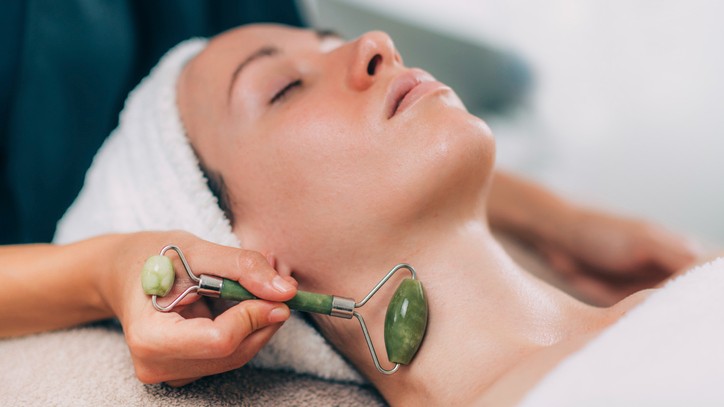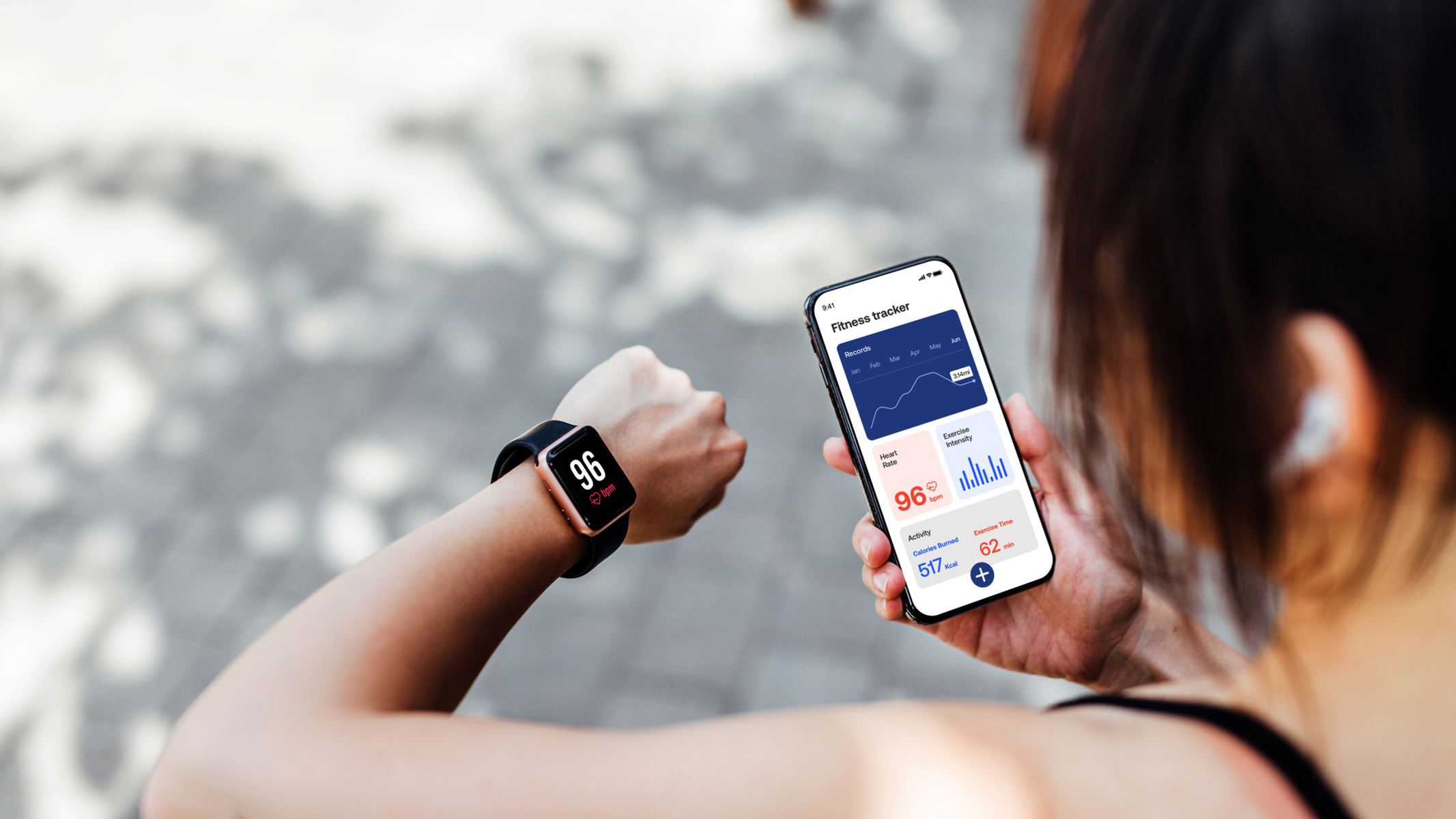What is a lymphatic drainage massage and how does it work?
We ask the experts about lymphatic drainage massage and the potential benefits for your health

Lymphatic drainage massage is a type of massage therapy that may help to relieve swelling that occurs when medical treatment or poor health causes blockages to the lymphatic system. This is the part of the body that protects us from infection and disease.
Certain health conditions - including obesity, inflammation, infection and cancer - can cause lymph fluids to build up, a condition known as lymphedema. Lymphatic drainage massage can help to reduce this by using gentle pressure to move lymph (excess fluid) from your tissues to your lymph nodes.
“If you think of your body like a fish tank, the lymphatic system acts like a filtration system,” says Jules Willcocks, founder of Body Ballancer® Systems Ltd. “If you don’t look after the filtration pipes, it doesn’t matter how many times you fill it up with fresh water, it would quickly get clogged and toxic.”
Willcocks says this is because the mechanics that help to keep the water fresh and healthy aren’t working properly. The lymphatic system works in the same way - if you don’t have a fully functioning healthy lymphatic system it will, over time, get clogged with toxins that lead to a number of health concerns.”
Here, we’ll dive deeper into how lymphatic massage works, the potential benefits, and a step-by-step guide on how to perform a lymphatic drainage massage yourself. If you're ready to take self-massage to the next level, our guide to the best massage guns has a great selection too.
What is a lymphatic drainage massage?
“The lymphatic system sits alongside the body’s cardiovascular system, quietly helping to look after your health,” explains Willcocks. “The reason it is so important is because it performs three critical functions. It supports your immune system by removing toxins, dead blood cells, pathogens and other waste. It helps your body to absorb fats and fat-soluble vitamins from your digestive system, delivering these nutrients to cells where they’re used as fuel. And it also removes excess fluid – known as ‘lymph’ – and waste products from the spaces between the cells and organs of the body.”
Willcock says that a healthy lymphatic system can become compromised due to illness, lack of physical activity, stress, poor diet or toxic overload. This can lead to a range of issues, including tissue swelling, poor skin tone, excess weight, cellulite, headaches, joint pain, fatigue and greater susceptibility to illness.
“Lymphatic drainage massage can help to keep the body running smoothly by improving lymphatic flow,” she says. “The massage gently targets the delicate lymph vessels and nodes that sit just below the skin, which only require very light pressure in order to move fluid through. By contrast, treatments like aromatherapy, sports and Swedish massage use a firmer touch to work into a different area of the body and the muscles.”
What does a lymphatic drainage massage do?
Lymphatic drainage massage, or manual lymphatic drainage as it is also known, can help the body to maintain proper blood circulation, body fluid balance and immune function.
It’s a massage technique that works to encourage the natural movement of lymph fluids, with studies suggesting it may help people with the following health conditions:
- Rheumatoid arthritis
- Lymphedema (swelling in the legs, feet or arms)
- Fibromyalgia (a long-term condition that causes inflammation, discoloration of the skin and swelling)
- Chronic venous insufficiency (when leg veins don’t allow blood to flow back to the heart, causing blood to pool in the legs)
A randomized controlled trial looking into the impact that lymphatic drainage massage had on health-related quality of life and symptoms of chronic venous insufficiency also found that it helped to reduce pain levels.
What are the potential benefits of a lymphatic drainage massage?
“The lymphatic system supports your immune system by removing toxins, getting rid of excess fluid and helping your body to absorb vitamins from your digestive system,” says Willcocks. “As we know, the lymphatic system can often get blocked or overrun because of things like stress, illness and an unhealthy lifestyle. While a good diet and regular exercise are important, lymphatic drainage massage may give your lymphatic system a boost, leading to a wide range of health, aesthetic and fitness benefits.”
These could include:
- Reducing swelling caused by water retention
- Boosting the immune system to help prevent illness and disease
- Removing pathogens and toxins
- Improving digestion
- Helping you feel lighter and less bloated
- Aiding sleep and relaxation
- Improving body shape
- Supporting faster muscle recovery to aid with exercise
How to perform a lymphatic drainage massage
As well as receiving a lymphatic drainage massage from a certified therapist, you can learn basic techniques to use at home.
“To perform lymphatic drainage massage, use gentle pressure that only affects the skin - that is to say, don’t press so hard that you feel the muscle,” says Lizzie Read, sports massage and sports therapy coach from P3RFORM. “Use a flat palm, or fingertips, and soft, smooth movements. Although lymphatic massage can be used to reduce swelling and inflammation, avoid directly massaging any areas that are swollen as this could cause further irritation to that area.
“Lymph fluid ultimately drains into the bloodstream at the base of the neck, so this is the most important place to focus any lymphatic massage - even if you have swelling or inflammation in other areas. Use slow, mindful movements - not hard and fast like you might find with deep tissue massage. Find a light rhythm while practicing lymphatic massage. Do not massage in circular motions, massage in strokes, in one direction only.”
References
Bergmann, A., Baiocchi, J., & de Andrade, M. (2021). Conservative treatment of lymphedema: the state of the art. Jornal vascular brasileiro, 20, e20200091. https://doi.org/10.1590/1677-5449.200091
dos Santos Crisóstomo, R. S., Costa, D. S., de Luz Belo Martins, C., Fernandes, T. I., & Armada-da-Silva, P. A. (2015). Influence of manual lymphatic drainage on health-related quality of life and symptoms of chronic venous insufficiency: a randomized controlled trial. Archives of physical medicine and rehabilitation, 96(2), 283–291. https://doi.org/10.1016/j.apmr.2014.09.020
Sign up for the Live Science daily newsletter now
Get the world’s most fascinating discoveries delivered straight to your inbox.

Maddy Biddulph is a freelance health and fitness journalist with over 26 years of experience working for consumer media in the US and UK. As a Level 3 personal trainer and weight loss advisor she is used to trying out and reviewing the latest health and fitness products. At Maddy Biddulph Personal Training, she runs one-to-one and small group sessions, as well as group exercise classes. She specializes in mobility work with seniors and runs regular chair workouts in her hometown of Oxford.










